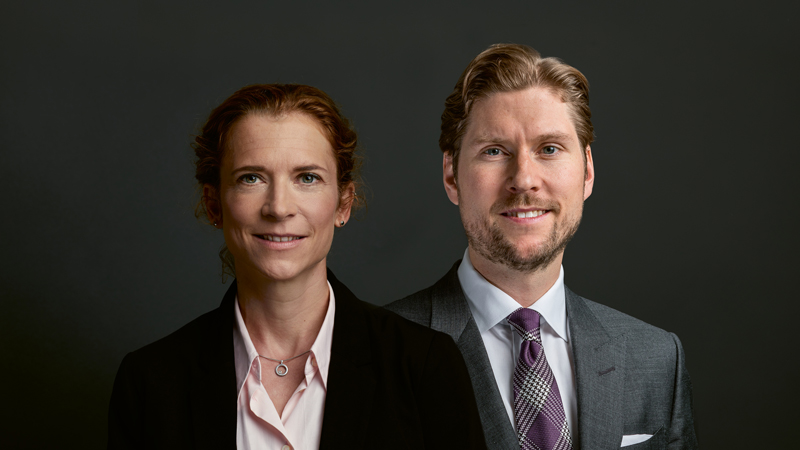5 facts you need to know about the AHV reform (retirement age 65)

What women (and men) can count on when it comes to retirement
In the near future, Switzerland will raise the retirement age for women to 65. This can affect your pension situation, especially if you were born between 1961 and 1969. Certain details are changing for men as well.
The AHV reform, which the Swiss people voted on in September 2022, is expected to enter into force on January 1, 2024. The exact date can still be postponed, but the changes are largely known already. The bottom line is that the changes do not only affect the AHV itself, but also retirees’ second-pillar retirement plans, for example their pension fund.
So what should women (and men) approaching retirement be expecting? The following five facts are things you should definitely familiarize yourself with already.
1. There will now be a flexible retirement age for women and men
The new term around which everything revolves is “reference age.” As from 2028, it will uniformly be 65 years of age. All insured persons are to be free to decide when, between the ages of 63 and 70, they would like to begin drawing their pension. Partial advance withdrawals from the pension fund, as well as partial deferrals of these payments are explicitly provided for. In addition, you can set the date of your retirement based on a specific month instead of simply choosing the year. So if you wish to remain professionally flexible at an older age, you will have more flexible options in the future.
In comparison, Switzerland previously had a “regular retirement age” – or two, in fact: one for women and one for men. And the law (AHV) did not regulate the early withdrawal or deferral of partial pension payments, for example.
It should also be mentioned that the reference age will not only be adjusted in terms of the AHV, but also adapted in retirees’ professional pension plans. For women who are affiliated with a pension fund, this will consequently lead to a longer period of savings into the pension fund, and thus a higher amount of accumulated retirement assets when they do retire.
2. For women, a transitional arrangement will apply
In certain aspects, women who are about to retire are significantly affected by the higher retirement age. In order to cushion the effects of the reform, an agreement was reached on a transitional arrangement for women born between 1961 and 1969, the so-called pension supplement. This provides relief to women with a lower income in particular. The pension supplement is calculated as follows, assuming the reform enters into force on January 1, 2024:
|
*The monthly AHV pension supplement is the respective percentage of the following amounts: |
||
| YEAR OF BIRTH | NEW RETIREMENT AGE FOR WOMEN | AHV PENSION SUPPLEMENT* |
| 1960 | 64 years (currently valid) | no supplement |
| 1961 | 64 years and 3 months | 25% |
| 1962 | 64 years and 6 months | 50% |
| 1963 | 64 years and 9 months | 75% |
| 1964 | 65 years | 100% |
| 1965 | 65 years | 100% |
| 1966 | 65 years | 81% |
| 1967 | 65 years | 63% |
| 1968 | 65 years | 44% |
| 1969 | 65 years | 25% |
3. More incentives to keep working
In the future, anyone who works past the reference age of 65 and earns more than the exempt amount of CHF 1,400 per month or CHF 16,800 per year must continue to pay into the AHV. Currently, however, these contributions do not lead to a higher pension. The AHV reform corrects that.
These contributions will now have a positive effect on the amount of your pension; in other words, they are “pension-building” contributions. At all income levels, it is possible to waive the exempt amount, which makes it even easier to close contribution gaps. This makes continuing employment financially more attractive and increases flexibility. However, those who have already reached the maximum pension amount may not increase it any further.
4. Partial retirements in the pension fund
The reform also has an impact on the 2nd pillar, i.e. professional pension schemes. Pension funds will now be required to allow for partial retirements in several steps. Previously, this was regulated differently from pension fund to pension fund (more on this here). Essentially, this change now allows you to withdraw your pension fund capital in at least three stages.
However, in the case of a lump-sum withdrawal or a mix of lump-sum and annuity, a maximum of three steps and a maximum of two lump-sum withdrawals are possible. This situation is complicated by the fact that there are cantonal differences in tax law and pension law. In order to make sure you are optimizing your particular situation, it is worth getting individual advice. The earlier you plan to withdraw your pension fund assets, the greater your leeway.
5. Deferral of vested benefits
Today, you can defer withdrawing your 2nd pillar vested benefits for up to five years after you retire. With 3rd pillar funds (pillar 3a), however, this is only possible if you continue gainful employment after retirement age. The Federal Council is currently examining whether it should adapt the rules of the 2nd pillar to bring them in line with those of the 3rd pillar. Whether, and when, this will happen is currently unclear.
GOOD TO KNOW
How will Switzerland finance the AHV reform?
Because of the reform, even higher VAT payments will ultimately be necessary for financing the revised AHV. This adjustment of the Value Added Tax will take place according to the following plan:
| VAT | INCREASED BY | NEW VAT |
| Standard rate | 0.4% | 8.1% |
| Reduced rate | 0.1% | 2.6% |
| Special rate for lodging | 0.1% | 3.8% |
You can find additional information on the website of the Federal Social Insurance Office (BSV).
Give us a call:
|
 |
Personal consultingOpen contact form to request a callback or an appointment. |
 |
Request email replyWe will gladly answer your question in writing via email. |


